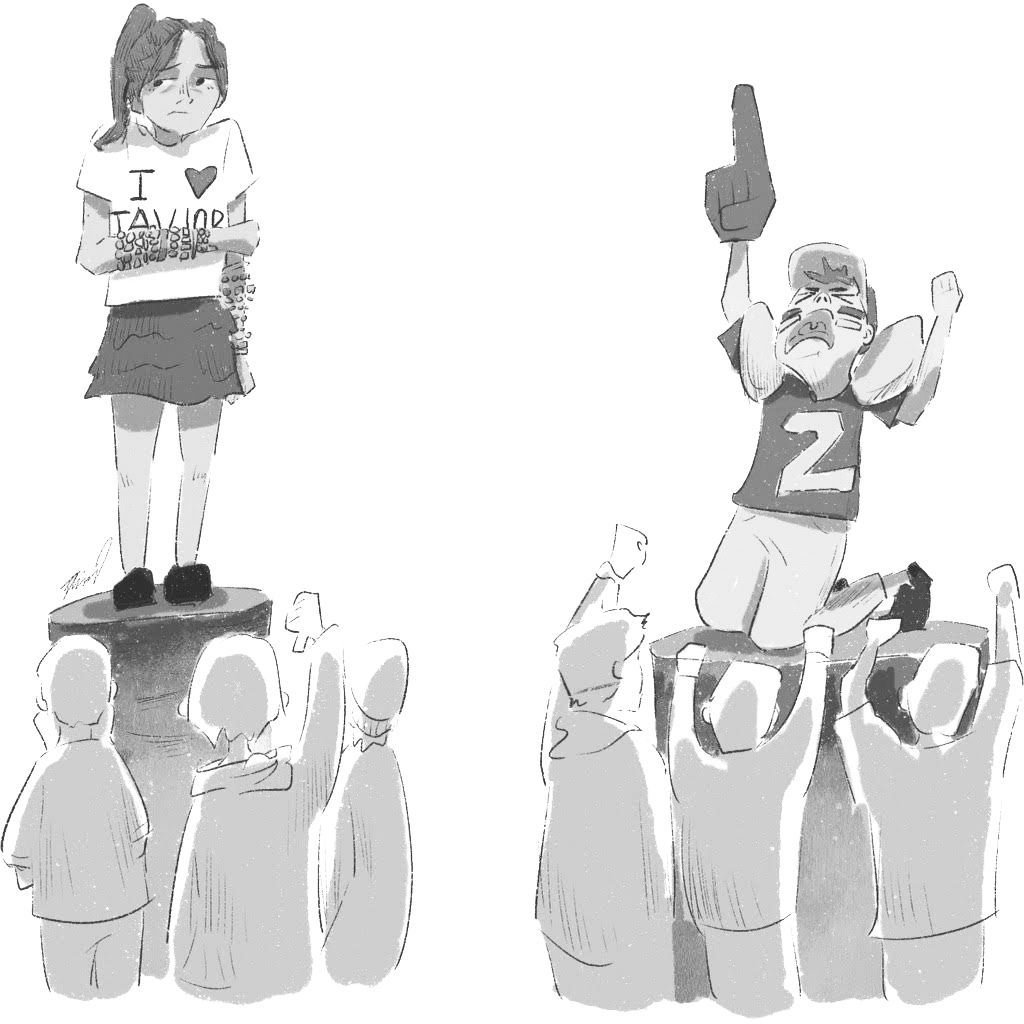Things were very different in the ’70s. Disco music was playing on radio stations throughout the country, men and women everywhere thought platform shoes were a look, and OJ Simpson’s only victims were on the field. More importantly, however, oil prices were skyrocketing due to an embargo on the U.S. called by OPEC, a Middle Eastern petroleum organization. As a result, the U.S. economy was slowly growing, but prices rose at an alarming rate. These rising prices caused property taxes to increase to the point where many Americans were unable to pay them despite owning valuable homes. At the time, these property taxes funded local schools, which meant that some areas subsequently received far more money per student than others. Rightfully, the California Supreme Court ruled in the Serrano vs. Priest case that this violated the state constitution. Their solution was to set revenue limits locally, meaning that tax receipts that exceeded a set limit were redistributed to other areas. This redistribution was largely frowned upon, and the criticism led to the passage of Proposition 13, a proposition pitched as a “taxpayer’s revolt” that reduced property tax to only one percent of assessed value and removed a school board’s ability to collect taxes. The idea of a permanent tax break was extremely appealing to Californians, who at the time were dealing with severe inflation. For that reason, Proposition 13 passed easily, but many voters likely didn’t yet realize how consequential it would be.
Without being able to rely on the funds from property taxes, school funding was in a dire situation. Schools were not only largely relying on state funds, but were scraping by. The quality of education in California was quickly declining; while the population grew, school resources didn’t, and it was showing through overcrowded schools and underpaid teachers. Even as demand for school funding grew, its priority in Sacramento shrank. According to Ed100.org, an educational website founded by educational policy experts, more and more budget cuts were being made, which meant more and more teachers were being laid off while having an influx of students. Proposition 13 essentially prioritized paying less in property taxes overpaying for the education system.
After more than 10 years of watching the public education system progressively worsen, Californians decided that changes had to be made. Governor George Deukmejian passed Proposition 98 in 1988, and it was a progressive move for California. This proposition guaranteed that the state would spend a bigger and more consistent amount on public education annually. Although it certainly didn’t fix California’s school funding woes, it was a stride in the right direction.
Despite the impact of Proposition 98, California’s school funding situation was still less than ideal. But in 2013 another significant piece of legislation was passed. Local Control Funding Formula (LCFF) is a system that allocates funds based on each district’s particular needs. Much like Proposition 98, this is not always a perfect system. Under LCFF, each student receives a base grant, an initial amount of money that isn’t affected by any other factors. More importantly, LCFF gives further financial aid to students who have higher needs. Students considered to be higher needs fall into three categories: children learning English, children in poverty, and children in foster care. Districts receive 20 percent additional funding for kids who fall into these three categories, which is called supplemental funding. However, communities that have a high percentage of students in the higher needs category receive a tremendous boost in money through what is called “concentration funding.” This means that any district where more than 55 percent of students fall into one of the three higher needs categories receives another 50 percent of its base grant on top of its initial funding for every student above that 55 percent threshold.
For many districts, LCFF is a godsend. San Diego Unified School District is a prime example of this, as they easily surpass the 55 percent threshold and receive concentration funding accordingly. For schools that do receive concentration money, it’s a necessity. Truly higher needs districts come with a unique set of challenges that simply require more funding. For the students who fall into high-needs categories, the system works. Unfortunately, what can be a godsend for some districts is a problem for others.
Even more unfortunately, one of those districts is Poway Unified School District. PUSD receives less than the California average for school funding—surprisingly low for an upper-middle-class district. Ironically, the issue lies in PUSD’s middle-class status. Despite having many students who are of higher needs, the district fails to collectively meet the 55 percent threshold. At the same time, PUSD isn’t wealthy enough to simply compensate with foundation funding—the practice of using money from school fundraising groups. For wealthier schools, foundation funding is an easy way to fund your school directly– out of your own pockets. However, for virtually any other schools this isn’t an adequate method.
“I kind of view it as double taxation,” Patel said.“I’m happy to give money to my school because I want my kids to do well, and we can balance our budget for it, but there’s some families who can’t even balance their basic household needs.”
For households that can’t meet their needs, giving to a foundation isn’t even in question. However, the majority of those families receive concentration funding to help balance funds—something that middle-class districts often don’t receive.
Districts who do receive concentration funding are receiving upwards of an additional $2,000 per student from surpassing the 55 percent threshold. Asking a PUSD foundation to raise that amount of money would mean that they would have to gather around $70,000,000. To put this in context, wealthier foundations gather around only $200,000. PUSD isn’t the only school s San Marcos Unified School District was also affected as well, as they recently fell below the 55 percent threshold, which significantly hindered their funding.
One solution, according to PUSD Board member Darshana Patel, is to “broaden the bucket,” or reevaluate the categories that make up higher needs students in the first place. The main change to the state funding formula that Patel suggests is changing the category of foster youth to “youth in transition.”
“There are other community members that also endure this constantly changing environment,” Patel said.
Although foster youth face a particularly arduous set of challenges, many kids also go through the experience of constantly moving, but aren’t accounted for in LCFF’s formula. These students also deserve more funding because of the problems they face, such as emotional issues brought on by losing friends and culture shock as well as curriculum changes.
“[Military students] may be learning geometry as a seventh grader, but here we’re learning algebra as seventh graders, which is completely different, and then they’re thrown off,” Patel said.
Still, children in transition aren’t accounted for in the current formula, which leaves homeless and military kids without any additional support under LCFF. This problem is so prevalent that even Coronado School district struggles with funding because of their high military population, despite being a very wealthy district. Although school funding has changed over time, it’s clear that the way we fund schools in California is fundamentally flawed. The solution, however, is far from simple, primarily due to California’s incredibly high tax rates.
“We tax everything,” Patel said. “Our gas tax is the highest, our income tax is one of the highest.”
Because of this we can’t simply put more of our tax dollars towards education. The irony is that, due to the progressive nature of California, we already use taxpayer money for many causes, not just public education.
“We’re a very progressive state, philosophically and politically, so we want to fund everything as a state,” Patel said. “We want to fund low-income housing, we want to fund medical care for all, we want to fund environmental protection, we want to get our labor unions, and we have to fund public education.”
Even so, something needs to change. Very few people want to be taxed further, but a parcel tax going towards education is eventually going to become necessary. California will also need help from the federal government sooner or later. Around 85 percent of our school funds come from state funds and local taxes, with only nine percent coming from the federal government. With property taxes as low as they are, our system won’t be able to last forever.
“Most people don’t even know what their Mello-Roos goes for,” Patel said.
According to Patel, if people were more aware of the problem, they would likely support solutions.
“If we educate our kids properly, they can grow up to be responsible citizens and make good policy decisions,” Patel said. “Before we can solve the issue, we need to be informed about the problems we face. Even if there’s no perfect solution, any solution will start with awareness.”





